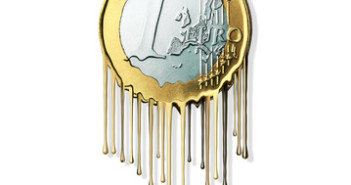The ECB convenes to to make its monthly rate decision as the level of inflation remains low, but is it low enough for using the “nuclear option” of setting a negative deposit rate? Probably not. Nevertheless, the ECB could still take action in the face of strong exchange rate. In addition, there is a “wild card” of the ECB’s 2016 staff projections.
Here is the background, the options and 4 scenarios for the ECB decision.
Update 1: ECB leaves rates unchanged – so far, as expected.
Live blog: Draghi does not announce new measures – EUR/USD screams higher
Background
The level of inflation has been low in the euro-zone, and for a long time. Headline CPI inflation stood on 0.8% in the past two months (for February according to the initial flash read). This is well below the 2% target of the ECB. Core inflation rose back to 1%, but this is also far satisfactory.
ECB president Mario Draghi warned that if inflation remains low for too long, it becomes harder to return to normal levels. On the other hand, the Bank sees low inflation but vehemently denied the threat of deflation.
Negative deposit rate
The main lending rate already stands at 0.25% and the deposit rate stands at 0%. In the ECB”s last two rate cuts, including the last surprising slash in November, the deposit rate was left unchanged, thus squeezing the corridor. Draghi already said in various occasions that setting a negative rate is one of the tools the ECB has and that his institution is technically ready for that.
A negative deposit rate means that banks are “punished” for parking money with the ECB, and thus they could increase lending to the real economy. A side effect is that money leaves the euro-zone, pushing down the exchange rate, and this could also boost exports and raise prices of imported goods. A potential move could be setting the main rate at 01.0-0.15% and the deposit rate at -0.10%.
The recent publication of inflation data on Friday did not dig the bottom: CPI and Core CPI have already seen lower levels of 0.7% each. So, markets are not expecting a move.
On the other hand, the ECB staff will publish forecasts for 2016 for the first time. Draghi mentioned this several times. If inflation expectations for 2014, 2015 and 2016 remain too low, the ECB could act to bring them back to target. This is a wild card for the decision.
Mini QE
Another option that is certainly on the cards is to push more money into circulation. The ECB bought bonds of Greece, Portugal, Ireland, Spain and Italy from the eruption of the debt crisis. It later stopped the program as the OMT replaced it. For every euro spent buying bonds, the ECB drained a euro out of the markets. This is called sterilization: the amount of money in circulation remained more or less unchanged. The current level of bond buys in the SMP stands at around €175 billion.
With the slow growth in money growth in the euro-area, the ECB is now considering to stop sterilizing these bond buys. In theory, this could help lending and the economy, while indirectly contributing to exports by lowering the value of the euro.
175 billion euros is a relatively low amount of euro-printing when comparing to similar quantitative easing program enacted by the US, UK and Japan with regard to the size of the economies, but in addition to adding money to the system, it could work as a hint that a bigger scheme is possible.
This “non-sterilization” move has already received the blessing of the conservative German Bundesbank and is certainly a viable option.
So what will the ECB do? How will the euro react?
4 Scenarios
- No cut, end of SMP sterilization: This compromise option for providing more stimulus without entering uncharted territory does not face rejection any more and could be a good tool for battling the danger of deflation. While it isn’t a massive QE program, it opens the door to bigger QE and the euro could take a hit. Probability: high.
- No action, dovish message: If the ECB decides not to take action, Draghi might counter the move with expressing concern about the fragile recovery and show alertness to the strong value of the euro and the low inflation. In this scenario, the euro could take a temporary hit, but recover relatively quickly. Probability: medium-high.
- Negative deposit rate: If the ECB projections point to lower inflation for too long, the ECB could act before it becomes too late. The option is not priced in and would result in a collapse of the euro in the immediate aftermath and for a long time afterwards. Probability: medium.
- No action, upbeat message: If the ECB projections are not all bad, Draghi could repeat his phrase about the “glass half full” and not provide any hints about future action. This would send the euro higher. Given the high exchange rate of the euro, the probability is low.
Draghi’s message becomes more important if no new policy is announced.
What do you think? Will the ECB act? What will happen to the euro?
Further reading:
- Attempts to talk down the euro unlikely to succeed
- EUR/USD weekly outlook
